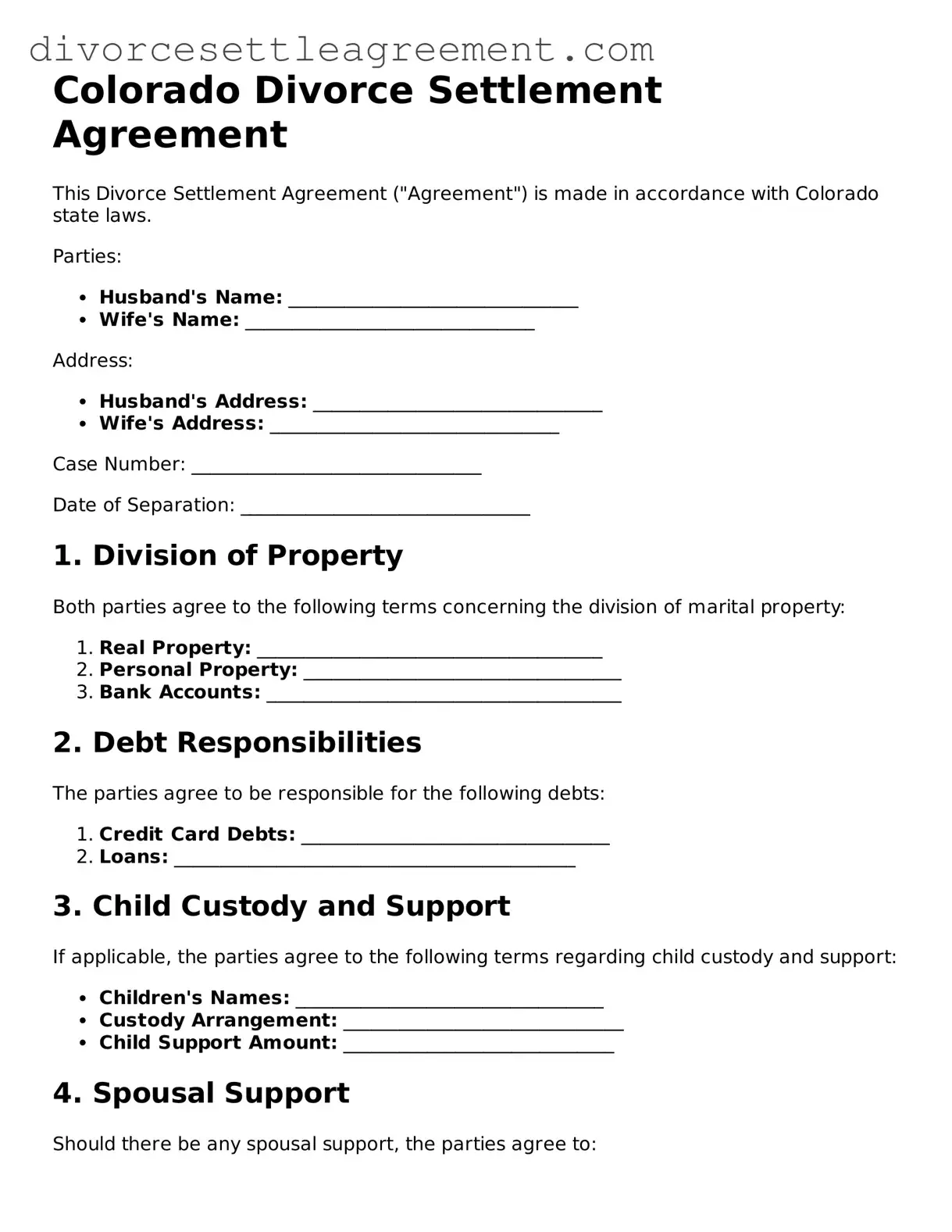What is a Colorado Divorce Settlement Agreement?
A Colorado Divorce Settlement Agreement is a legal document that outlines the terms of a divorce between two parties. This agreement typically covers the division of assets, debts, child custody, and support arrangements. It serves to formalize the decisions made by both parties, ensuring that each understands their rights and obligations moving forward.
Who needs to file a Divorce Settlement Agreement?
Both spouses must file a Divorce Settlement Agreement if they are seeking a divorce in Colorado and have reached an agreement on the terms of their separation. This document is essential for the court to review and approve the settlement before finalizing the divorce. If there are children involved, the agreement must also address custody and support issues.
How do I complete the Divorce Settlement Agreement form?
To complete the Divorce Settlement Agreement form, both parties should discuss and agree on the terms of their divorce. Key areas to address include the division of property, allocation of debts, and arrangements for child custody and support. Once all terms are agreed upon, fill out the form with accurate information and ensure both parties sign it. It is advisable to consult with a legal professional to ensure all necessary details are included.
What happens if we cannot agree on the terms?
If both parties cannot reach an agreement, they may need to go through mediation or court proceedings to resolve their disputes. Mediation involves a neutral third party who helps facilitate discussions and find common ground. If mediation fails, the court will make decisions regarding asset division, custody, and support based on the best interests of the parties and any children involved.
Can the Divorce Settlement Agreement be modified after it is finalized?
Yes, a Divorce Settlement Agreement can be modified after it is finalized, but only under certain circumstances. If there is a significant change in circumstances, such as a job loss or a change in income, either party can request a modification. This request must be filed with the court, and both parties will need to agree to the changes or have the court decide.
How long does it take to finalize a divorce with a Settlement Agreement?
The time it takes to finalize a divorce with a Settlement Agreement in Colorado can vary. Generally, if both parties agree and the court approves the agreement, the process can be completed within a few months. However, delays can occur if there are disputes or if the paperwork is incomplete. It is essential to ensure that all documents are accurately completed and submitted to avoid unnecessary delays.
